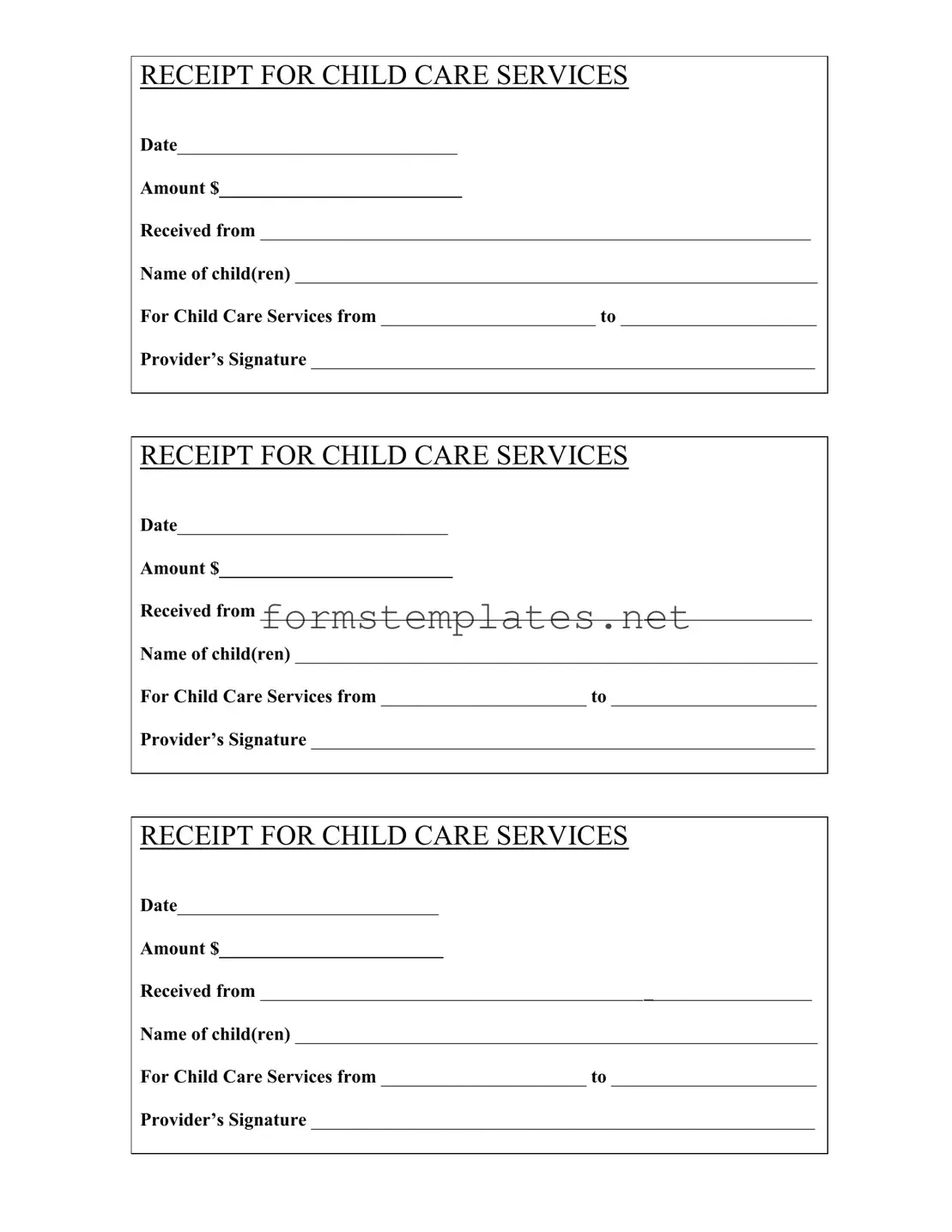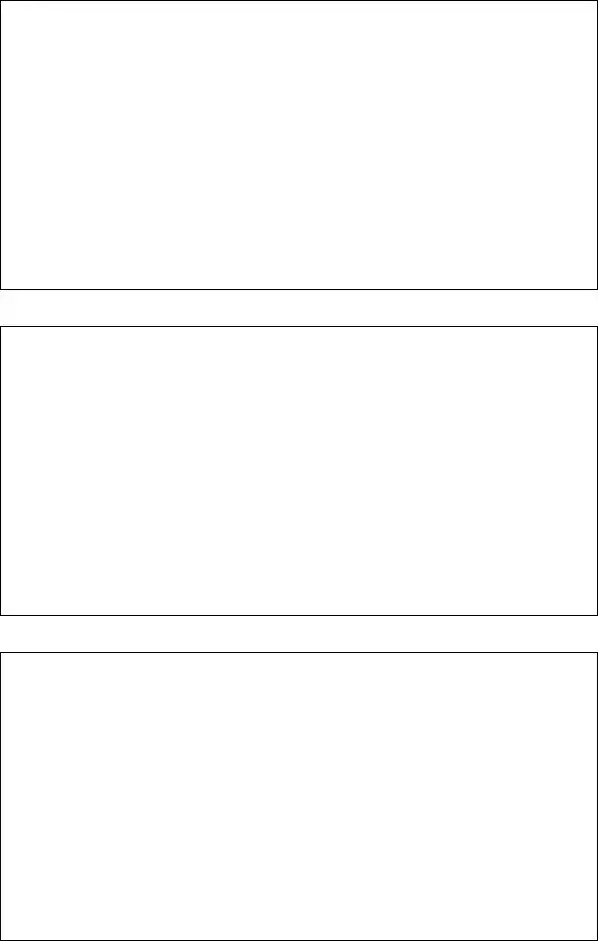RECEIPT FOR CHILD CARE SERVICES
Date______________________________
Amount $__________________________
Received from ___________________________________________________________
Name of child(ren) ________________________________________________________
For Child Care Services from _______________________ to _____________________
Provider’s Signature ______________________________________________________
RECEIPT FOR CHILD CARE SERVICES
Date_____________________________
Amount $_________________________
Received from ___________________________________________________________
Name of child(ren) ________________________________________________________
For Child Care Services from ______________________ to ______________________
Provider’s Signature ______________________________________________________
RECEIPT FOR CHILD CARE SERVICES
Date____________________________
Amount $________________________
Received from ___________________________________________________________
Name of child(ren) ________________________________________________________
For Child Care Services from ______________________ to ______________________
Provider’s Signature ______________________________________________________

